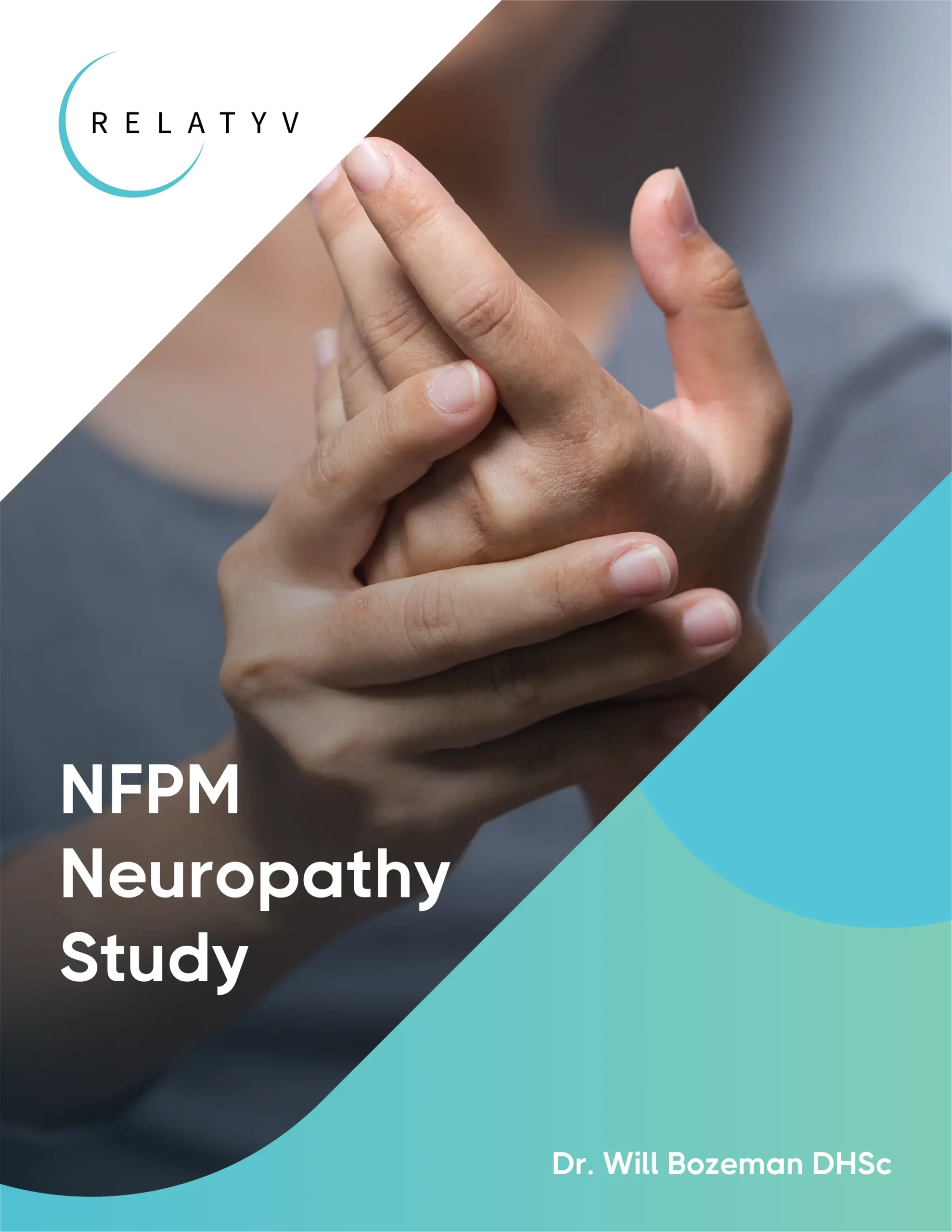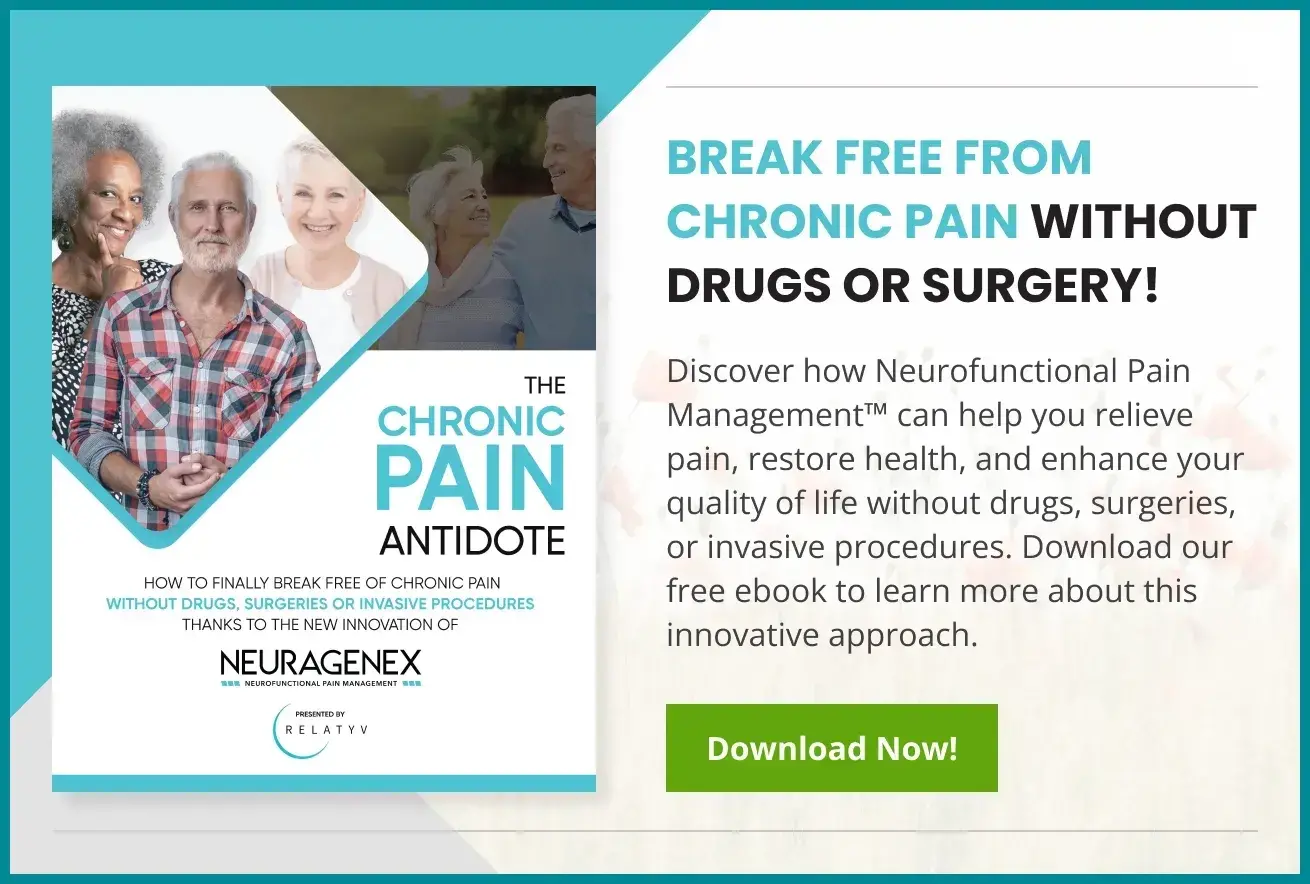Endometriosis

Addressing Endometriosis Pain With Intercourse
Read More
August 19, 2023
Did you know that endometriosis is a condition that affects around 11% of American women between the ages of 15-44? This complex medical condition involves the abnormal growth of endometrial tissue outside the uterus lining, which leads to distressing symptoms for those affected.
Endometriosis is a varied condition that develops through stages, with each stage presenting distinct characteristics and challenges. These stages range from minimal (Stage 1) to severe (Stage 4), based on the extent of invasive endometrial tissue growth.
In this article, we will discuss the complexities of endometriosis, its diverse forms, and the stages through which it can progress. By gaining a deeper understanding of these concepts, an effective management strategy can be tailored to your individual needs for lasting relief from endometriosis-related pain.
We’ll explore the conventional treatment options typically prescribed, encompassing pharmaceuticals, hormonal control medications, and surgical interventions. Furthermore, we’ll introduce Relatyv’s innovative Neurofunctional Pain Management techniques, which can help women struggling with endometriosis find relief across all forms and stages without requiring drugs or surgery.
Our goal is to provide you with helpful insights so you can better understand your symptoms and know how to choose the treatment options right for you and your lifestyle. Let’s start with defining the different types of endometriosis.
Endometriosis is a multifaceted condition that evolves not only in stages but also in diverse forms. Exploring these forms highlights the condition’s intricate nature that can display varying symptoms and impact each person uniquely. Here are the most prevalent types of endometriosis, each with its distinct characteristics and implications:
Peritoneal endometriosis is the most frequently encountered, where the abnormal endometrial tissue begins to invade the peritoneum, the lining of the abdominal wall. This type of endometriosis causes inflammation and adhesions throughout the thin peritoneal membrane, leading to chronic pelvic pain, painful intercourse, as well as intensified menstrual cramping and bleeding.
Abdominal endometriosis describes cases where the invasive endometrial tissue begins to grow outside of the peritoneal cavity and through the abdominal wall. This can occur of its own accord, or it can develop due to surgeries like hysterectomies or C-sections, where the endometrial cells adhere to the incision sites. This type of endometriosis leads to symptoms of abdominal tenderness, a notable lump or mass across the affected area, and significant pelvic pain, especially during menstruation.
Ovarian endometriomas, also known as chocolate cysts, get their name from the presence of distinctively dark fluid-filled cysts that form on the surface of the ovaries. In more severe cases, they may invade deep within the ovarian tissue. These cysts can cause significant pelvic pain as well as hinder ovarian function, potentially impacting fertility. It is believed that ovarian endometriomas can lead to endometriosis spreading further into the abdomen. Additionally, although it is rare, these cysts may increase the risk of ovarian cancer development.
Deep infiltrating endometriosis describes the abnormal growth of tissue that invades abdominal organs near the uterus, such as the bowel and bladder. This intrusive tissue can be found deep within the layers of the affected organs, leading to severe, persistent pain, bowel and urinary symptoms, and ongoing challenges with fertility and menstrual cycle regularity.
When invasive endometrial tissue begins to spread across a number of organs, it is described as diffuse endometriosis. This indicates a highly advanced stage of the condition, which can cause a multitude of uncomfortable symptoms, such as chronic pain that is difficult to manage, fertility challenges, hormonal imbalances, and a heightened inflammatory response within the body.
These are among the primary types of endometriosis. However, it is important to acknowledge that many other variations exist, all causing impactful symptoms with individual experiences. Let’s now discuss how endometriosis originates before we explore its distinct stages.
Having a deep understanding of how endometriosis develops helps us to comprehend the complexity of its uncomfortable symptoms. As we now know, endometriosis occurs when there is an abnormal growth of endometrial tissue (uterine lining) outside of the uterus, where it begins to infiltrate various abdominal organs and structures. But what exactly causes the pain?
Endometriosis, whether minimal or severe, triggers pain due to the tissue’s normal response to the hormonal changes of the menstrual cycle. The tissue will inflame, shed, and bleed, just as it would if it were still in the uterus. However, when this happens outside of its natural environment, it causes inflammation, scarring, cysts lesions, and adhesions to its surrounding tissues and structures. This entire process gives rise to the distressing symptoms of endometriosis, such as severe cramps, heavy periods, digestive issues, infertility and other fertility challenges, and pain during or after intercourse.
It is evident that endometriosis can have a profound impact on a sufferer’s quality of life.
The characteristics of endometriosis will vary among individuals, and its severity depends on factors such as the extent and depth of infiltration, its location, hormonal influences, and individual responses.
Furthermore, while an increase in symptom severity doesn’t always indicate advanced endometriosis, it does increase the likelihood of worsening or additional symptoms if there is deeper tissue infiltration, especially involving organs like the bowel, bladder, or ovaries. Individual factors such as age and hormonal fluctuations can also increase the severity of symptoms.
If endometriosis is left untreated, there is an increased risk that it will progressively worsen. This can lead to further or deeper tissue infiltration and scar tissue formation caused by inflammation and damage to surrounding tissues. Over time, this can result in the gradual worsening of symptoms.
Receiving early intervention and effective symptom management for endometriosis can reduce the risk of worsening discomfort and potentially improve the overall progression of the condition. Exploring appropriate treatments can offer individuals strategies to prevent symptoms from progressing and increase quality of life.
Recognizing the wide spectrum of disease progression, symptoms, and individual experiences, it’s crucial to acknowledge all of the potential challenges and intricacies associated with this condition. Now that we have a solid understanding of how it develops and its impact, we will explain the different stages and classifications of endometriosis.
Exploring how endometriosis is classified can help you better understand your condition’s severity. Here we’ll explain the stages and distinct characteristics of endometriosis at each stage. Although endometriosis has no cure, we will explore the conventional treatments currently recommended to manage the painful symptoms and potentially prevent the condition from worsening.
A Stage 1 classification of endometriosis indicates a mild case that shows minimal signs of endometrial tissue growth outside of the uterus. The peritoneum may show signs of infiltration with small endometrial implants, wounds, or lesions. It’s possible that in minimal endometriosis there are signs of the abdominal or pelvic tissue being affected with very little or no scar tissue.
Symptoms are typically mild, though they can still cause concern. They may include pelvic discomfort or a minor increase in pain during menstruation or intercourse.
At this stage of endometriosis, it is usually recommended that you observe symptoms and schedule regular check-ins with your healthcare provider. Over-the-counter pain medications like ibuprofen or naproxen may be recommended to help provide short-term relief from discomfort.
Stage 2 entails more extensive abnormal tissue growth compared to minimal endometriosis. At this stage, the endometriosis is more established, with deeper implants, and there may be scar tissue present. It is likely that the ovaries have become affected, causing painful chocolate cysts.
Pain may become more intense than seen at Stage 1. It can begin impacting daily life and potentially causing discomfort during bowel movements and urination. Additionally, if the ovaries have become infiltrated, there may be fertility complications.
Depending on your symptoms, a doctor may recommend hormonal medications alongside over-the-counter medications. These include birth control pills that minimize or completely stop your menstrual cycle, which reduces bleeding, inflammation, and painful cramping. Additionally, complementary therapies such as acupuncture and pelvic floor physiotherapy, and complementary medicines may be recommended to relieve painful symptoms and support hormonal health.
A classification of Stage 3, or moderate endometriosis, is given when there are multiple deep tissue infiltrations. One or more pelvic organs may be affected, such as the fallopian tubes, uterus, bladder, and bowel, causing cysts and scar tissue to develop.
Symptoms are more pronounced and are likely to become persistent, including severe (chronic) pelvic pain, dysfunction of the affected organs, decreased ovarian function, and potential fertility complications.
Alongside the previously mentioned treatments, for Stage 3 endometriosis, hormonal birth control via an intrauterine device (IUD) may be recommended as a more convenient approach. It can help manage hormonal fluctuations, as well as the pain and bleeding associated with menstrual cycles. However, it is important to note that this option is not a long-lasting solution for severe endometriosis-related pain.
This is the most advanced and severe stage of endometriosis. Stage 4 involves widespread tissue growth with numerous deep implants that have caused dense scar tissue. Large cysts can be seen on the ovaries, along with many significant adhesions across the pelvic organs.
Symptoms can be severe and debilitating, affecting an individual’s overall health and well-being. Scar tissues and adhesions can cause chronic pain and have implications on fertility. There may be instances where severe abdominal complications occur, such as a “frozen pelvis”, where multiple organs become fused together due to adhesions.
For Stage 4 endometriosis, treatments revolve around improving quality of life, preventing further organ dysfunction, and enhancing fertility. Surgical laparoscopy is usually necessary to remove extensive tissue growth, cysts, and adhesions. In some cases, a specialist may recommend drainage of cysts to alleviate symptoms and improve ovarian function.
By gaining these insights into the different stages of endometriosis and the available treatment options, you can make more informed decisions about managing your condition and seeking appropriate care that suits your individual needs.
Pain is an individual experience, and it’s important to note that the severity of your symptoms is not directly linked to what stage you are in. Someone experiencing severe pain and discomfort may have endometriosis at Stages 1 or 2, and conversely, someone with more advanced endometriosis may show milder symptoms.
To accurately diagnose endometriosis, a surgical laparoscopy is required to visually assess the extent of endometrial tissue growth. This surgical procedure allows for a more comprehensive evaluation, which can include the removal of cysts or adhesions if found. For a laparoscopy to be performed, general anesthesia is required, which involves potential risks associated with the use of anesthesia medications and the risks of the surgical procedure itself.
For women struggling with the persistent pain of endometriosis, discovering enduring relief and finding an improvement in quality of life are big priorities. At Relatyv, we are dedicated to offering pain management solutions that go beyond pharmaceuticals and surgical procedures, using the fundamentals of Neurofunctional Pain Management (NFPM). Our protocol encompasses a whole-person-centered approach that utilizes the following fundamental modalities of NFPM:
Electroanalgesia is a non-invasive therapy that involves high-pulse electrical stimulation, targeting the intricate connections between pain, the nervous system, and the brain. Pain signals are intercepted at the nerve’s source, providing cellular-level pain relief. By diminishing pain-stimulating signals, electroanalgesia interrupts the cycle of inflammation that leads to pain, ultimately reducing overall levels of inflammation. Most importantly, lasting relief can be achieved as this therapy eliminates pain, triggers the natural release of endorphins, and promotes overall comfort.
Specialized hydration intravenous therapy (IV therapy) is another essential component of our approach. This therapy restores essential nutrients and electrolytes directly through the bloodstream. This targeted approach can create a supportive environment for the body to heal, promoting optimal organ function and reducing inflammation. IV therapy is tailored to your individual needs, addressing specific deficiencies that lead to the reduction of symptoms associated with endometriosis.
At Relatyv, we foster an approach to pain management that encompasses the whole person. We understand that pain goes beyond physical sensations and interventions, where it also incorporates aspects of your mental health and overall sense of well-being. Our comprehensive lifestyle counseling is a program that educates and supports patients to make informed decisions that enhance their quality of life. We help you embrace lifestyle changes that lead to sustained improvements in your comfort and reduction of endometriosis symptoms.
The Relatyv protocol combining electroanalgesia, IV therapy, and lifestyle counseling is an innovative approach that helps patients find relief from endometriosis pain and restores their overall health. Our goal is to improve your overall quality of life, providing you with enduring relief from the challenges and discomforts that come with endometriosis.
When it comes to endometriosis, having an understanding of the stages, forms, and complexities of this condition is crucial. Although painful symptoms are individual, they should not be ignored, and recognizing their potential causes is the first step toward achieving relief.
By addressing symptoms promptly and seeking professional guidance, you can find solutions that better manage the painful symptoms of endometriosis. Through exploring innovative approaches like Neurofunctional Pain Management, you can find long-lasting relief and improve your overall quality of life.
Remember, the path to lasting relief begins with early awareness, understanding your condition, and taking proactive steps. Relatyv is here to support you every step of the way, offering personalized strategies and compassionate care to help you regain control of your well-being and embrace a life free from the constraints of endometriosis-related pain.
About the Author
Will is a healthcare executive, innovator, entrepreneur, inventor, and writer with a wide range of experience in the medical field. Will has multiple degrees in a wide range of subjects that give depth to his capability as an entrepreneur and capacity to operate as an innovative healthcare executive.
Share on Social Media




You can see how this popup was set up in our step-by-step guide: https://wppopupmaker.com/guides/auto-opening-announcement-popups/
You can see how this popup was set up in our step-by-step guide: https://wppopupmaker.com/guides/auto-opening-announcement-popups/
Neurofunctional Pain Management Overview
IV Therapy
Symptoms
Conditions Treated
Treatments
Articles by Category
Locations
Colorado
Wisconsin
Georgia
Hiram
Lawrenceville
Marietta
Powder Springs
Texas
Waco
Victoria
Illinois
Buffalo Grove
New Lenox
St. Charles
Arizona
Tucson
Waddell
Arlington
Avondale
Buckeye
Superior
Mesa
Palo Verde
Morristown
Tempe
Chandler
Anthem
Eloy
Florence
Fort McDowell
Phoenix
El Mirage
Coolidge
Gilbert
Arizona City
Casa Grande
Casa Blanca
Aguila
Sacaton
Apache Junction
Kearny
Stanfield
Goodyear
Litchfield Park
Alabama
Arkansas
California
Florida
Idaho
Louisiana
Michigan
Rhode Island
Minnesota
Nevada
New Jersey
New Mexico
North Carolina
Ohio
Pennsylvania
South Dakota
Tennessee
Virginia
Washington

